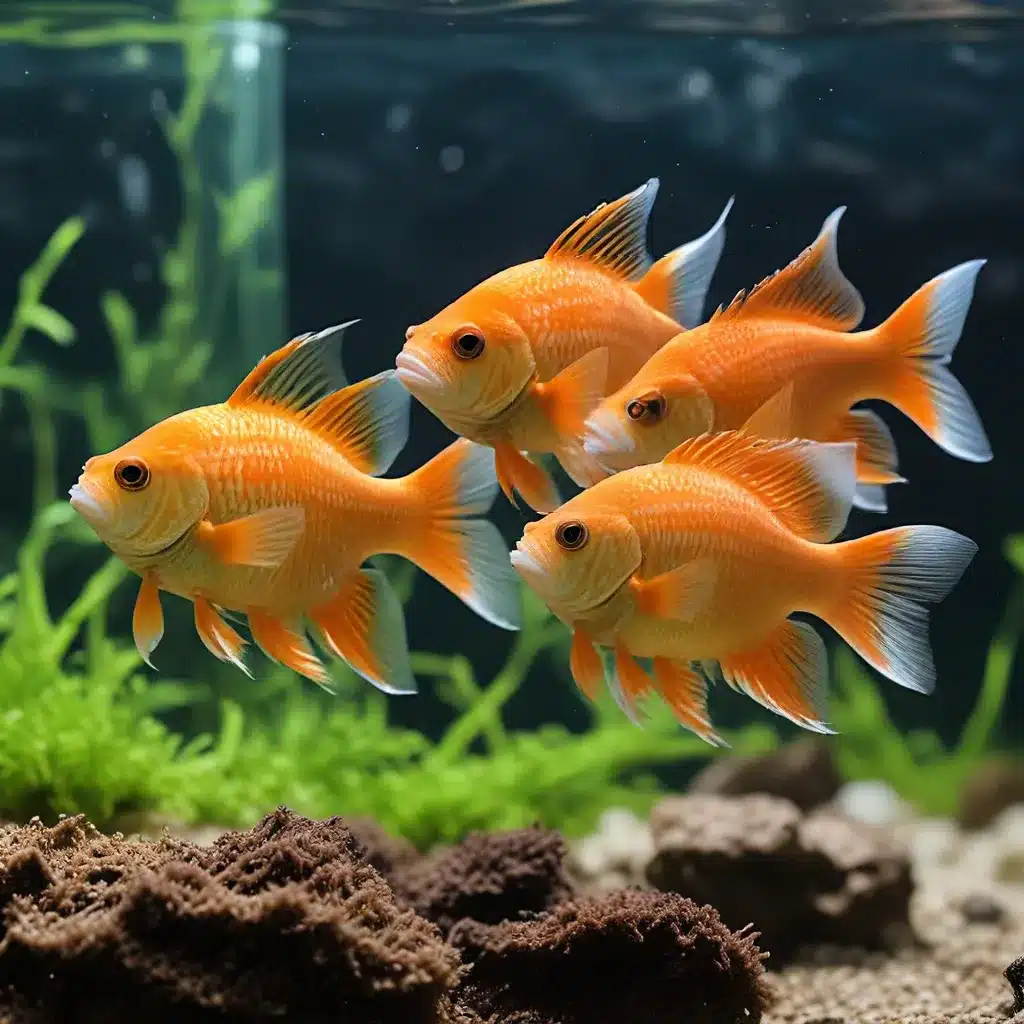
Understanding the Fundamentals of Fish Breeding in Captivity
Breeding aquarium fish in a home aquarium setting can be a captivating and rewarding endeavor for hobbyists. However, it also requires a deep understanding of the specific needs and behaviors of various fish species. Successful captive breeding involves carefully replicating the natural environmental conditions that trigger spawning, as well as providing the appropriate care and nutrition for both the parent fish and their offspring.
One of the key factors in successful fish breeding is water quality management. Maintaining optimal water parameters, such as temperature, pH, and dissolved oxygen levels, is crucial for stimulating the natural breeding behaviors of fish. Aquarists must also be attentive to water changes, filtration, and the introduction of live foods to create the ideal conditions for spawning and fry (baby fish) development.
Another crucial aspect of captive fish breeding is understanding the specific spawning behaviors and parental care strategies of different species. Some fish, such as guppies and mollies, are livebearers, meaning they give birth to fully developed young. Others, like angelfish and corydoras catfish, are egg-layers that require specific substrates or structures for the parents to deposit their eggs. Paying close attention to these species-specific needs is essential for ensuring successful reproduction.
Preparing the Aquarium for Breeding
Before attempting to breed aquarium fish, it’s important to set up the tank environment to mimic the natural habitat as closely as possible. This may involve adjusting water parameters, providing appropriate plants or decor, and introducing live foods that the fish would naturally encounter in the wild.
One effective strategy is to maintain a separate breeding tank that is specifically designed and maintained for this purpose. This allows for greater control over the environmental conditions and reduces the risk of disturbance or competition from other tank inhabitants. The breeding tank should be appropriately sized for the species, with hiding spots, spawning sites, and ample space for the fry to develop without being preyed upon by the parents.
King Aquarium offers a wide range of aquarium supplies and equipment, including specialized tanks, filters, and decorations tailored for breeding setups. Consulting with experienced aquarists or reputable online resources can also provide valuable insights into the specific needs of the fish species you’re interested in breeding.
Inducing Spawning Behavior
Triggering the natural breeding instincts of aquarium fish can be a delicate process, as different species may respond to a variety of environmental cues. Water changes, changes in temperature, and the introduction of live foods are often effective in prompting spawning behavior.
For example, corydoras catfish may be encouraged to breed by slowly lowering the water level in the tank and then reintroducing fresh, slightly cooler water. Guppies and mollies, on the other hand, may be stimulated to breed by providing ample space, hiding spots, and a diverse diet rich in live foods.
Observing the natural behaviors of the fish, such as courtship displays, nest-building, and egg-laying, can provide valuable insights into the specific triggers that may induce spawning. Patience and a willingness to experiment with different techniques are key to successfully breeding aquarium fish in captivity.
Caring for Newly Hatched Fry
Once the fish have successfully spawned and the eggs have hatched, the next critical step is providing the appropriate care and environment for the delicate fry. This may involve separating the fry from the parent fish, as some species are known to consume their own offspring.
Maintaining optimal water quality and providing the fry with a suitable diet of microscopic live foods, such as infusoria or baby brine shrimp, is essential for their survival and healthy development. Gradually transitioning the fry to larger, more nutrient-dense foods as they grow can help ensure a successful transition to adulthood.
Monitoring the fry’s growth and behavior closely, and making adjustments to their environment as needed, can help ensure a high survival rate. Experienced aquarists may also consider using specialized breeding tanks or fry-rearing containers to provide the necessary level of care and protection for the delicate young fish.
Challenges and Considerations in Captive Fish Breeding
While the rewards of successfully breeding aquarium fish can be immensely gratifying, the process is not without its challenges. Maintaining the appropriate water parameters, providing the correct nutrition, and preventing predation or disease can all be significant hurdles for aquarists to overcome.
Additionally, some fish species are notoriously difficult to breed in captivity, requiring highly specific environmental conditions or complex parental care strategies. Researching the unique breeding requirements of the fish you’re interested in and seeking advice from experienced breeders can help mitigate these challenges.
It’s also important to consider the responsible management of the fry once they reach adulthood. Overpopulation and the potential for inbreeding are important factors to consider, as is finding suitable homes for the offspring. Consulting with local aquarium clubs, online forums, or reputable retailers can help aquarists navigate these considerations and ensure the responsible propagation of their captive-bred fish.
Conclusion: The Joys and Rewards of Aquarium Fish Breeding
Breeding aquarium fish in captivity can be a deeply rewarding and educational experience for hobbyists. By understanding the unique needs and behaviors of different fish species, aquarists can create thriving breeding programs that not only provide a fascinating glimpse into the natural world but also contribute to the preservation and propagation of rare or threatened aquarium fish.
Through patience, dedication, and a willingness to learn, aquarists can navigate the complexities of captive fish breeding and enjoy the satisfaction of witnessing the life cycle of their aquatic companions unfold before their eyes. By sharing their knowledge and experiences, aquarists can inspire and empower others to engage in this captivating aspect of the aquarium hobby.

